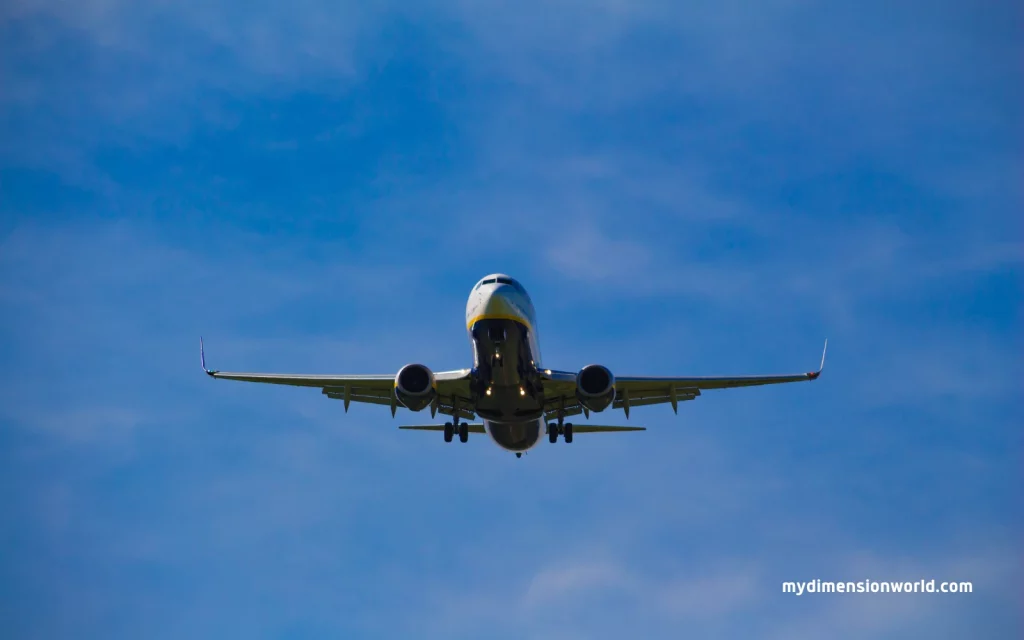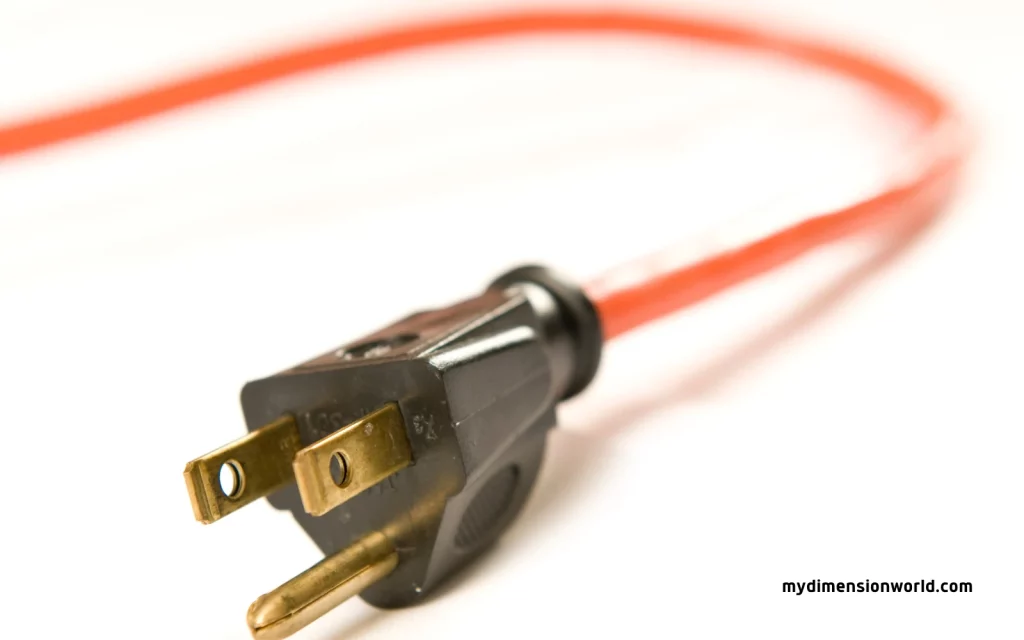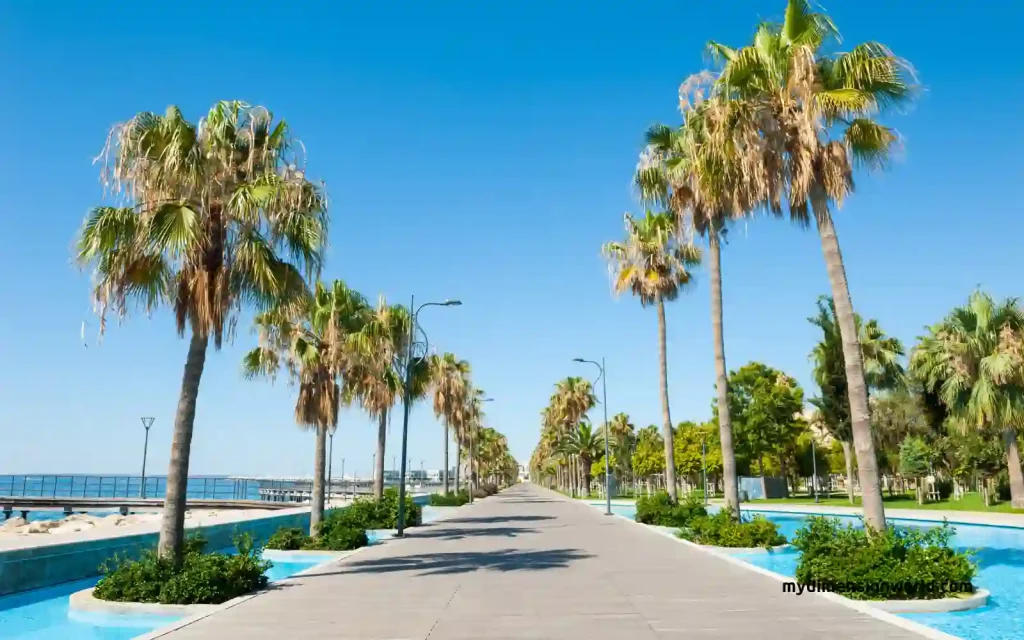When we try to imagine how long or tall 100 feet is, it can feel a bit abstract and hard to grasp.
We often use feet to measure everything from room sizes to tall buildings, but what does 100 feet really look like?
Whether it’s standing next to a towering tree or watching a plane take off, 100 feet is more common than you might think.
Let’s dive into this list of 13 things that measure around 100 feet and get a better sense of what this length means in real life.
Contents
- 1 How to Measure 100 Feet by Walking
- 2 1. A blue whale
- 3 2. Two megalodons
- 4 3. A 10-story building
- 5 4. Two shipping containers
- 6 5. A Football Field (Without End Zones)
- 7 6. Half a hockey rink
- 8 7. Boeing 737 Aircraft
- 9 8. Three volleyball nets
- 10 9. Five Rolls-Royce Phantoms
- 11 10. Standard extension cord
- 12 11. Two Cyprus trees
- 13 12. Three school buses
- 14 13. Power Transmission Towers
How to Measure 100 Feet by Walking
Measuring 100 feet without a tape measure or ruler might seem tricky, but one simple and practical method is to measure it by walking.
Here’s how:
Step Length: The average human step length is approximately 2.5 to 3 feet. This can vary depending on your height and walking stride, so it’s important to first find out how long your typical step is.
To measure your step length: Take a few steps naturally and measure the distance from the heel of one foot to the heel of the next. Do this several times and take the average to get your step length.
Count Your Steps: Once you know your average step length, you can estimate 100 feet by simply counting your steps. For example:
If your step length is 2.5 feet, you’ll need to take about 40 steps to cover 100 feet.
If your step length is closer to 3 feet, you’ll need about 33 to 34 steps.
Walk Naturally: While counting your steps, try to walk naturally to get an accurate measure.
Resist the urge to take exaggerated steps, as that could throw off your measurement.
This method works well in outdoor spaces or when you need to estimate distance quickly.
It may not be perfectly accurate, but it’s a useful skill for visualizing 100 feet when you don’t have precise measuring tools handy!
1. A blue whale

Let’s start with the largest animal on Earth: the blue whale (Balaenoptera musculus). This animal can grow up to 100 feet long and weigh as much as 199 tons.
Its body is long and streamlined, and its blue-gray color looks light blue underwater.
Despite their enormous size, blue whales feed almost entirely on tiny krill. They can eat up to 6 tons of krill a day.
They do this by filtering ocean water through baleen plates, which act like sieves.
Blue whales live in oceans worldwide, except the Arctic Ocean. They move between feeding areas near the poles and breeding spots in warmer waters.
Some blue whales stay in the same place all year. While often alone, they may gather in small groups to feed.
Once hunted close to extinction, blue whales are still endangered. They face threats from ship strikes, fishing gear entanglements, and climate change.
2. Two megalodons

The megalodon was one of the largest predators in history, capturing imaginations worldwide.
Fossil evidence suggests these giant sharks reached lengths between 50 and 67 feet. To help visualize this, picture two megalodons side by side.
Together, they would stretch almost 100 feet, the same length as a basketball court.
Although no complete skeletons have been found, scientists have used teeth and vertebrae fossils to estimate their size.
In fact, the word “megalodon” means “large tooth,” and their teeth could grow up to 18 centimeters long.
These powerful sharks preyed on large marine animals, including whales.
They ruled the oceans for millions of years before going extinct around 3.6 million years ago, leaving only their fossils behind.
3. A 10-story building

If you’ve ever stood next to a 10-story building, you’ve probably seen something close to 100 feet tall.
In many cities, buildings of this height are considered mid-sized, but when you’re standing next to one, it’s hard not to feel small.
Buildings like these often house offices, apartments, or hotels.
While not towering skyscrapers, they are still significant parts of the urban landscape, dominating the view and providing essential space in dense cities.
4. Two shipping containers

A shipping container typically measures 50 feet in length. It is used on cargo ships, semi-trucks, and trains to transport goods worldwide.
If you place two shipping containers end-to-end, you’d get a combined length of 100 feet.
Think about the amount of cargo a single container holds, then double it! That’s a lot of space for transporting goods across oceans and continents.
5. A Football Field (Without End Zones)

For sports fans, this one’s a no-brainer. The length of an American football field—from one 20-yard line to the other—is exactly 100 feet.
This excludes the end zones, but it gives you a good sense of how long 100 feet really is.
The next time you’re watching a game and see a quarterback throw a long pass, remember that it’s likely covering a large portion of those 100 feet.
6. Half a hockey rink

When you think of a hockey rink, you probably imagine a rectangular shape with two rounded corners at either end.
The official size for competitive matches is 200 feet long, but if you imagine a half-hockey rink, you’ll understand how big you are.
This size can be significant for various applications, including measuring the distance between two points, the length of a street, or the size of a room.
So, whether you’re a hockey fan or not, understanding the dimensions of a hockey rink can help you visualize distances and sizes tangibly.
7. Boeing 737 Aircraft

The Boeing 737 is one of the most popular commercial planes in the world. It is known for its versatility and efficiency.
First introduced in 1967, the 737 has undergone several major updates and evolved through four generations to meet modern travel demands.
The 737-500 series, for example, is approximately 100 feet long, making it a perfect representation of this length in real life.
As a narrow-body airliner, the Boeing 737 is widely used for short- to medium-haul routes, serving both domestic and international airlines.
Its design includes twin engines mounted under the wings, making it highly efficient for passenger and cargo transportation.
The plane’s continued success is evident in the 16,000+ orders placed over the years, with over 11,000 delivered as of 2024.
8. Three volleyball nets

If you want to set up a volleyball net, you’ll want to use the right size for your space. There are three main sizes: indoor, beach, and backyard. Indoor volleyball nets are typically 32 feet long and 39 inches tall for men’s games and 29.5 inches for women’s games.
Beach volleyball women’s sets are more minor, measuring 28 feet long and 31 inches tall. Finally, backyard volleyball nets are usually around 24 feet long and can vary in height.
No matter which size you choose, ensure there is plenty of room for players to move around and for the ball to travel at least 100 feet without hitting any obstacles.
9. Five Rolls-Royce Phantoms

Rolls-Royce Phantoms are stunning luxury vehicles that exude class and style. But have you ever wondered just how big they are?
Well, let me tell you. The Rolls-Royce Phantom measures around 19 feet, about as long as five average-sized cars lined up bumper to bumper.
And get this: the newest Phantom model, the Phantom VIII, is longer than the previous models, coming in at a whopping 20 feet!
It’s also about 6.5 feet tall. It’s 5.5 feet tall. So, if you stack 5 Phantoms on top of each other, you’d end up with a tower you’d be 100 feet tall! It’s pretty impressive; it’s
In terms of shape, the Phantom has a distinct, classic look with its long, sweeping lines and bold, imposing grille.
10. Standard extension cord

Extension cords are handy, especially in this day and age where we need electricity for almost everything.
These cords come in all different lengths, from a tiny 25 feet to a massive 100 feet. But, the most commonly used size is 50 feet, perfect for most household needs.
11. Two Cyprus trees

Cyprus trees are quite tall and narrow, like pine trees. They’re found all over Europe and are frequently used in landscape designs worldwide.
They’re edges because of their dense foliage and the fact that they can be grown so closely together.
Typically, Cyprus trees grow around 50 feet tall, though some may be a little shorter or taller than that.
So, if you can picture two Cyprus trees side by side, you can get a pretty good idea of what 100 feet would look like. It’s a pretty impressive test.
12. Three school buses

On average, a standard school bus is around 30 to 35 feet long. If you park three buses bumper to bumper, their combined length will be close to 100 feet.
It’s a fun and familiar way to picture 100 feet, especially if you remember riding in one of these iconic yellow buses.
13. Power Transmission Towers

You’ve likely seen power transmission towers while driving through rural areas. These tall structures, which carry electricity over long distances, are often around 100 feet tall.
Designed to be sturdy and withstand the elements, these towers support the high-voltage lines that keep cities and towns powered.
Their height is a perfect example of how tall 100 feet can be when standing next to one.
Thanks for reading!
